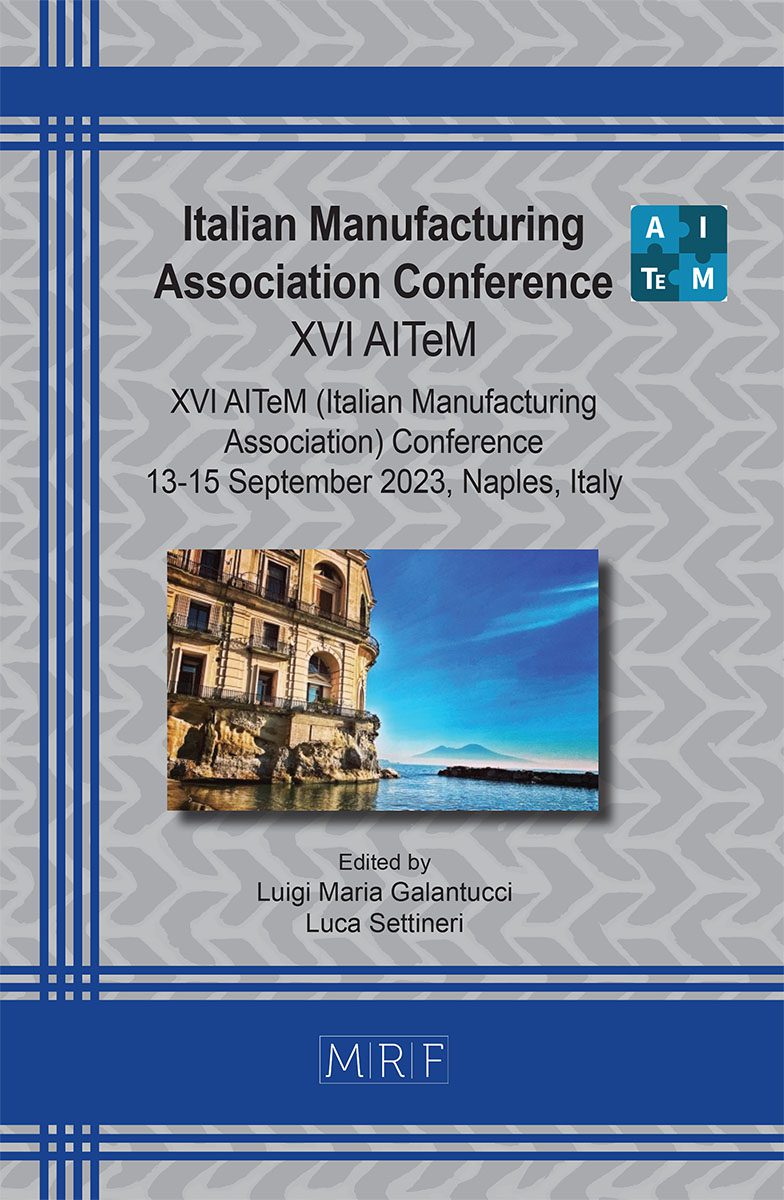Numerical evidence of submerged arc welding at changing of the main process parameters
Francesco Raffaele Battista, Romina Conte, David Izquierdo Rodriguez, Francesco Gagliardi, Giuseppina Ambrogio, Luigino Filice
download PDFAbstract. In the arc welding processes, the parts to be connected are subjected to thermal cycles that can generate distortions. Furthermore, owing to clamping constraints, residual stresses can arise affecting the mechanical properties of the welding bead. In the work proposed, multi-pass submerged arc welding (SAW) process was investigated by a numerical analysis, properly set by experimental evidence. Indeed, the welding bead of a reference sample, was section and etched before performing micrograph inspections to achieve the contours of both welded material and affected zone for each welding pass. Arc current, voltage and welding speed were the investigated process parameters. Their values were changed proportionally to maintain constant the generated specific heat of the process. Furthermore, the effect of different clamping set up was considered. As a result of the analysis, process configurations, according to the employed process parameters, able to reduce distortions and to minimize residual stress, were identified.
Keywords
Assembly and Joining Processes, Arc Welding, FEM
Published online 9/5/2023, 8 pages
Copyright © 2023 by the author(s)
Published under license by Materials Research Forum LLC., Millersville PA, USA
Citation: Francesco Raffaele Battista, Romina Conte, David Izquierdo Rodriguez, Francesco Gagliardi, Giuseppina Ambrogio, Luigino Filice, Numerical evidence of submerged arc welding at changing of the main process parameters, Materials Research Proceedings, Vol. 35, pp 302-309, 2023
DOI: https://doi.org/10.21741/9781644902714-36
The article was published as article 36 of the book Italian Manufacturing Association Conference
![]() Content from this work may be used under the terms of the Creative Commons Attribution 3.0 license. Any further distribution of this work must maintain attribution to the author(s) and the title of the work, journal citation and DOI.
Content from this work may be used under the terms of the Creative Commons Attribution 3.0 license. Any further distribution of this work must maintain attribution to the author(s) and the title of the work, journal citation and DOI.
References
[1] E. S.V. Marques, F. J.G. Silva, A. B. Pereira, Comparison of finite element methods in fusion welding processes – A review, Metals 10.1 (2020) 75. https://doi.org/10.3390/met10010075
[2] M. Slováček, T. Kik, Use of Welding Process Numerical Analyses as Technical Support in Industry. Part 1: Introduction to Welding Process Numerical Simulations. Biuletyn Instytutu Spawalnictwa. 4 (2015) 25-31. https://doi.org/10.17729/ebis.2015.4/3
[3] T. Kik, Computational techniques in numerical simulations of arc and laser welding processes. Materials 13.3 (2020) 608. https://doi.org/10.3390/ma13030608
[4] Y. Li et al, Effect of structural restraint caused by the stiffener on welding residual stress and deformation in thick-plate T-joints. J. of Mater. Res. and Tech. 21 (2022) 3397-3411. https://doi.org/10.1016/j.jmrt.2022.10.127
[5] D. Venkatkumar, D. Ravindran, Effect of boundary conditions on residual stresses and distortion in 316 stainless steel butt welded plate. High Temp. Mater. Proc. 38 (2019) 827-836. https://doi.org/10.1515/htmp-2019-0048
[6] D. Tikhomirov et al. Computing welding distortion: comparison of different industrially applicable methods. Advanced mater. research. Vol. 6. Trans Tech Pub. Ltd (2005) 195-202. https://doi.org/10.4028/www.scientific.net/AMR.6-8.195
[7] T. Kik, J. Górka, Numerical simulations of laser and hybrid S700MC T-joint welding. Materials 12.3 (2019) 516. https://doi.org/10.3390/ma12030516
[8] Z. Barsoum, M. Ghanadi, S. Balawi, Managing welding induced distortion-comparison of different computational approaches. Procedia Engineering 114 (2015) 70-77. https://doi.org/10.1016/j.proeng.2015.08.043
[9] A. A. Deshpande et al, Combined butt joint welding and post weld heat treatment simulation using SYSWELD and ABAQUS. Proceedings of the Institution of Mechanical Engineers, Part L: J. of Mater.: Design and Applications 225.1 (2011) 1-10. https://doi.org/10.1177/14644207JMDA349
[10] T. Kik, M. Slováček, M. Vaněk, Use of Welding Process Numerical Analyses as Technical Support in Industry. Part 2: Methodology and Validation. Biuletyn Instytutu Spawalnictwa 5 (2015) 25-32. https://doi.org/10.17729/ebis.2015.5/4
[11] L. Iorio (2021) ESI Welding simulation solution, ESI Group internal presentation.
[12] Welding Simulation User Guide, Sysweld Manual ESI Group.
[13] J. Goldak, A. Chakravarti, M. Bibby, A new finite element model for welding heat sources. Metallurgical transactions B 15 (1984) 299-305. https://doi.org/10.1007/BF02667333












